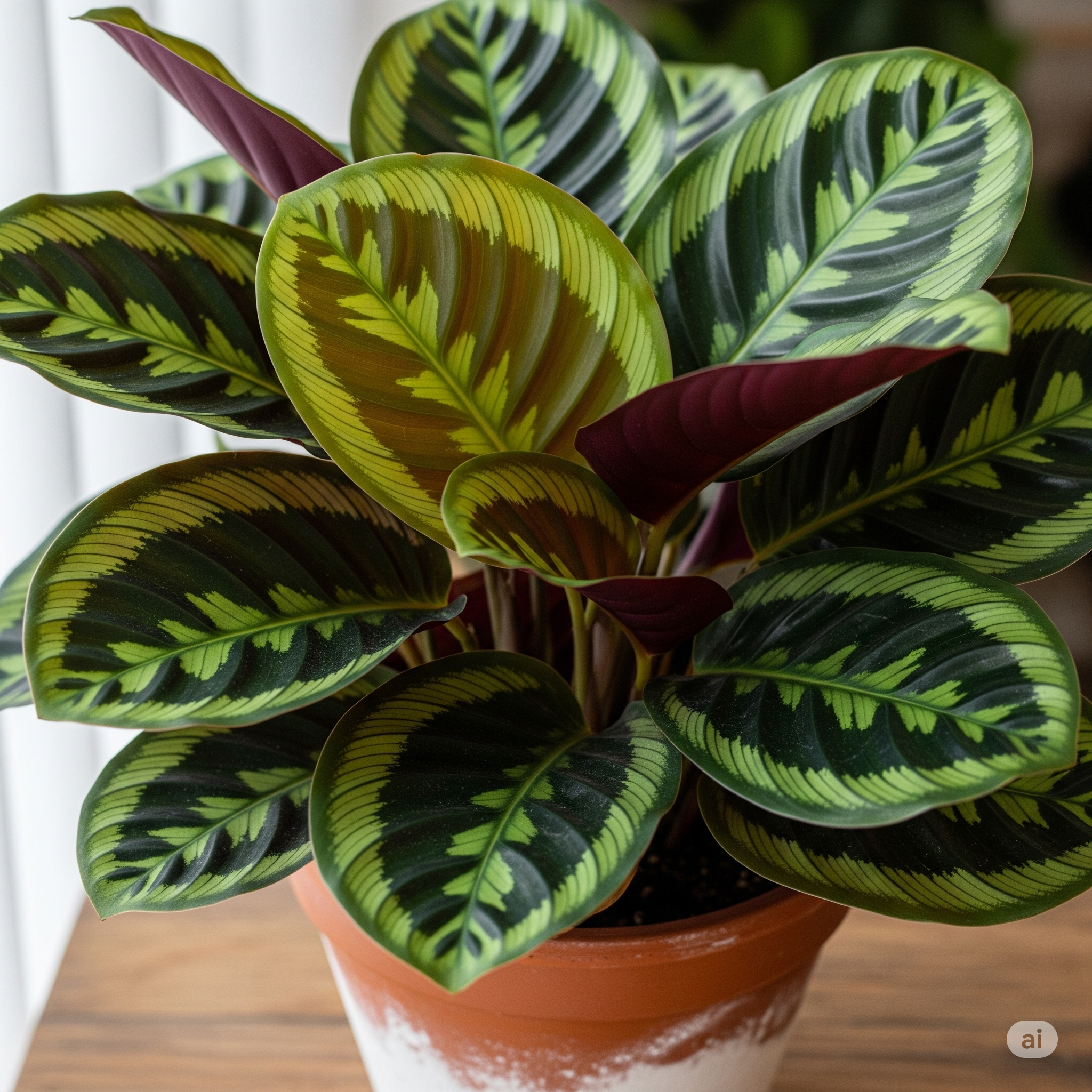Some links on this Website are affiliate links, meaning we may earn a commission if you make a purchase, at no additional cost to you. Please read our full Affiliate Disclosure for more details.
Growing herbs is one of the easiest and most rewarding ways to start a home garden. But what many beginners don’t realize is that there are herbs that grow well together and also, not all herbs can be planted side by side. Some thrive when planted with others, helping each other grow better through natural pest control, improved flavor, and shared growing conditions.
Others, however, compete for space, water, or nutrients, resulting in weak, stressed, or even dead plants. Understanding herbs that grow well together can make a massive difference in the health and productivity of your herb garden.
Whether you’re container gardening, building a raised bed, or planting directly in the ground, pairing herbs correctly ensures stronger growth, bigger harvests, and fewer gardening problems.
This guide breaks everything down into simple, easy-to-follow advice, including the best herb combinations, herbs that should not be planted together, and insights on common questions like “Can you plant basil and mint together?” and “What herbs can be planted with rosemary in a pot?” If you want a thriving herb garden, this is the place to start.
Why Companion Planting Herbs Matters
Companion planting herbs is more than just arranging plants neatly. It’s a strategic method used by gardeners for centuries to boost plant health and garden productivity. Herbs release natural chemicals (known as allelopathic compounds) that can affect neighboring plants.
Some herbs attract beneficial insects like bees and ladybugs, while others repel unwanted pests such as aphids, whiteflies, and mosquitoes. When you pair herbs with similar water, soil, and sunlight requirements, you reduce stress on the plants, making them grow more vigorously.
Just as importantly, planting herbs correctly helps you save garden space. Many herbs grow compactly, so pairing friendly ones in pots or beds allows you to maximize your growing area without overcrowding. When done right, companion planting offers a perfect balance of beauty, function, and flavor.
Can I Save A Plant From Root Rot?
How To Care For Basil Plant Indoors
Best Herb Combinations: Herbs That Grow Well Together
While most herbs are relatively easy to grow, pairing them with the right companions ensures you get the best results. The following combinations are based on water preferences, soil needs, sunlight requirements, and natural pest-controlling properties.
Basil and Its Ideal Companions

Basil is one of the most versatile herbs and works beautifully with many others. It prefers warm temperatures, moist soil, and at least six hours of sunlight daily. When planted next to herbs with similar growing preferences, basil thrives and becomes more fragrant.
Basil grows especially well alongside chives, parsley, cilantro, and oregano—herbs that also enjoy slightly moist, nutrient-rich soil. Many gardeners also plant basil near tomatoes because basil naturally repels pests like hornworms and whiteflies, making it a beneficial companion. In return, tomatoes provide light shade that helps basil stay hydrated during hot afternoons.
Do chives and basil grow well together?
Yes. Chives help deter aphids and enhance basil’s flavor, making them a perfect combination for both pots and garden beds.
Avoid planting basil with rosemary, sage, or lavender.
These herbs need much drier soil, and planting them together often stresses one or both plants.
Tips To Grow Basil Indoors Using Seeds
Rosemary and Its Best Partners
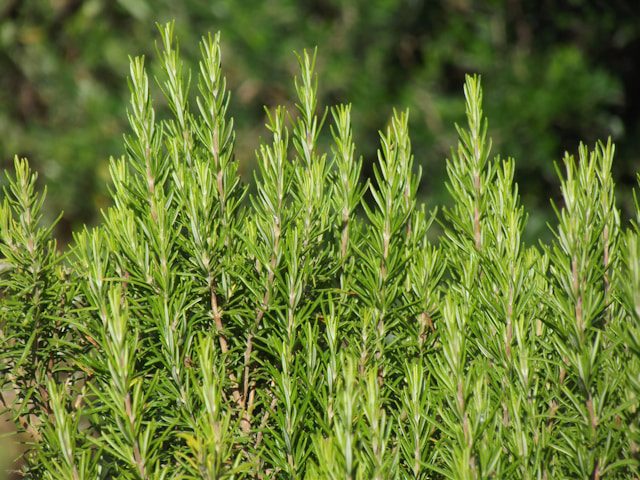
Rosemary is a Mediterranean herb that loves full sun, excellent drainage, and dry soil. Because of its woody structure and drought tolerance, it pairs best with herbs that share the same growing conditions.
Herbs that grow well with rosemary include:
- Thyme
- Sage
- Oregano
- Lavender
- Marjoram
What herbs can be planted with rosemary in a pot?
The best herbs for potting with rosemary include thyme, oregano, and sage. These herbs enjoy the same lean soil, allowing you to water sparingly without harming any of them.
Herbs that love moisture, such as basil, parsley, or cilantro, should not be planted with rosemary. The water needs differ greatly, and mixing them often leads to root rot in one or more plants.
Mint and Compatible Herbs

Mint is a special case because it grows aggressively and spreads through underground roots called runners. Because of this, mint is rarely planted with other herbs unless you want it to take over. The safest way to grow mint is in its own container where the roots cannot escape.
If you do choose to pair mint, make sure you do so carefully and preferably in a pot within a pot to prevent spreading. Oregano and lemon balm can be grown together with mint only if you purposely want a wild, untamed look because they are also vigorous growers.
Can you plant basil and mint together?
No. Mint will quickly overpower basil, stealing nutrients, space, and moisture.
Thyme, Sage, and Other Dry-Soil Herbs
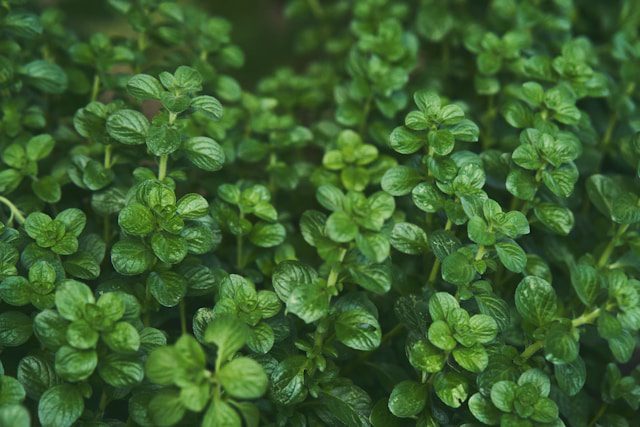
Thyme, sage, oregano, marjoram, and lavender belong to a category of herbs that love dry, rocky, well-drained soil. They thrive in full sun and require minimal watering. Because their growing requirements are nearly identical, these herbs form some of the best combinations in herb gardening.
When planted together, they create a cohesive Mediterranean herb bed that requires very little care. They also attract pollinators like bees and butterflies, improving the productivity of nearby vegetable gardens.
Parsley and Moisture-Loving Companions
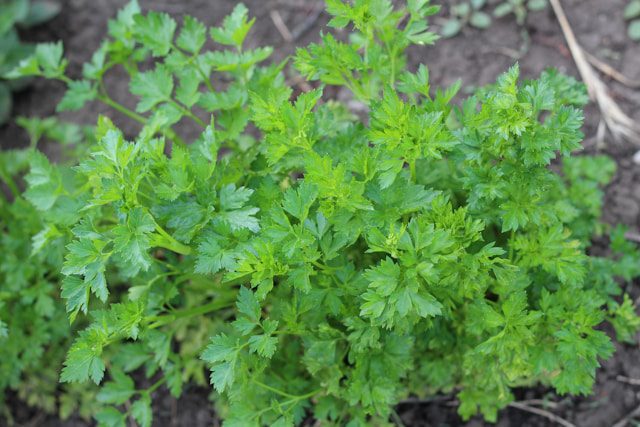
Parsley enjoys moist, fertile soil and partial to full sunlight. Because of its higher water requirement, parsley pairs nicely with basil, cilantro, and chives. These herbs share similar moisture preferences and grow well in the same containers or raised beds.
Avoid pairing parsley with woody or drought-tolerant herbs like rosemary or thyme, which may struggle with the frequent watering parsley needs.
Cilantro and Cool-Weather Herbs
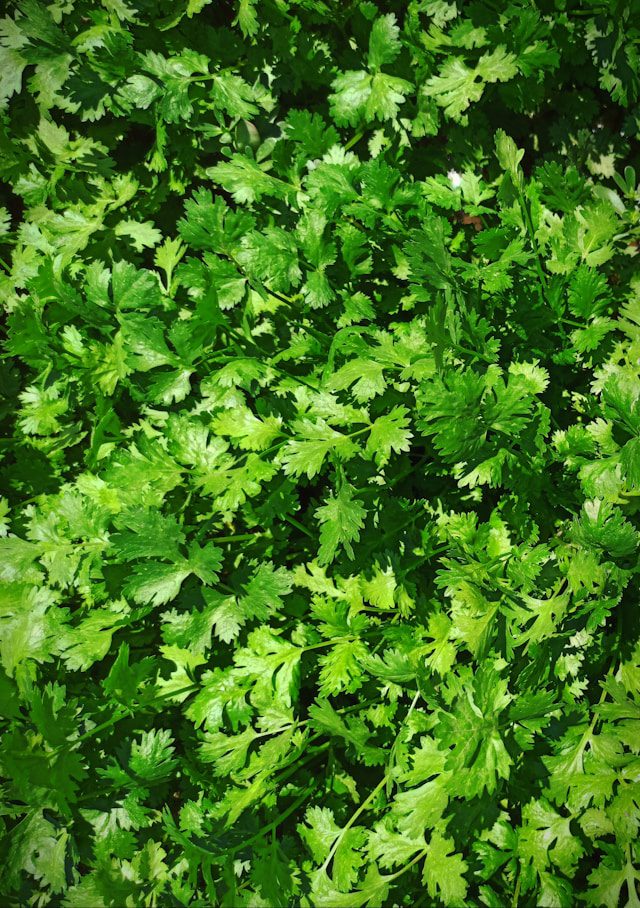
Cilantro is a fast-growing herb that prefers cooler temperatures and consistent moisture. It grows well with parsley and chives because they thrive in similar conditions. These combinations make excellent choices for spring and fall herb gardens.
Cilantro should not be planted near rosemary, thyme, or lavender because these dry-loving herbs cannot tolerate cilantro’s watering needs. Additionally, cilantro bolts quickly in heat, so pairing it with heat-loving herbs creates mismatched growth cycles.
Herbs That Should Not Be Planted Together
Some herbs simply don’t get along due to different climate preferences, root systems, or water requirements. Planting incompatible herbs leads to poor growth, nutrient competition, and stress.
Herbs that should not be planted together include:
- Mint with most other herbs due to its invasive growth.
- Rosemary with basil because one likes dry soil while the other needs moisture.
- Sage with cilantro or parsley because sage will dry out the soil.
- Lavender with cilantro because lavender thrives in heat while cilantro prefers cool weather.
- Dill with cilantro because they attract similar pests and can cause cross-pollination.
Keeping incompatible herbs apart preserves the health and productivity of each plant.
Growing Herbs in Pots Together
Growing herbs in pots is one of the easiest ways to control soil conditions and watering levels. The key to successful container combinations is matching herbs based on their growth habits and moisture needs.
Herbs like rosemary, thyme, oregano, and sage pair perfectly in containers because they require very little water. Meanwhile, herbs like basil, parsley, cilantro, and chives thrive in consistently moist soil, making them good partner plants for shared pots. Mint should always be given its own container because of its spreading roots.
Planting herbs together in containers not only saves space but also creates beautiful, compact herb arrangements that are easy to maintain.
List of Herbs That Like Full Sun and Dry Soil
If you live in a sunny, hot region (or if you want a low-maintenance herb garden) these herbs are perfect choices because they are drought-tolerant and thrive with minimal watering:
- Rosemary
- Thyme
- Sage
- Oregano
- Marjoram
- Lavender
- Bay leaf
These herbs can be grouped together in either pots or raised beds for a cohesive Mediterranean garden feel.
7 Easy Tips For Growing Plants Indoors
Beginner’s Guide to Planting Chive Seeds Successfully
How Far Apart to Plant Herbs in a Raised Bed
Proper spacing is essential for airflow, pest prevention, and healthy root growth. Small herbs like chives and thyme can be planted closer together because they have compact root systems. Medium-sized herbs like basil and parsley require more room, while larger herbs such as rosemary, sage, and lavender need significantly more space to spread.
Spacing your herbs correctly prevents overcrowding, which can lead to fungal diseases and reduced yields. Always consider the mature size of the herb before planting.
Companion Planting Chart for Herbs
Below is a simple, quick-reference guide for herb compatibility.
| Herb | Good Companions | Bad Companions | Notes |
| Basil | Parsley, chives, tomatoes, cilantro | Rosemary, sage | Prefers moist soil |
| Rosemary | Thyme, sage, oregano | Basil, cilantro | Loves dry soil |
| Mint | Lemon balm, oregano | Most herbs | Highly invasive |
| Thyme | Rosemary, sage, lavender | Cilantro | Prefers full sun |
| Parsley | Basil, cilantro | Rosemary, sage | Moist, rich soil |
| Sage | Rosemary, thyme | Basil, cilantro | Needs dry soil |
| Cilantro | Parsley, chives | Rosemary, lavender | Cool weather |
FAQ
1. Can you plant basil and mint together?
No. Mint spreads aggressively and will quickly overwhelm basil. They should always be planted separately.
2. What herbs grow best with rosemary?
Dry-soil herbs such as thyme, sage, oregano, and marjoram are ideal companions for rosemary.
3. Do chives and basil grow well together?
Yes. Chives enhance basil’s flavor and help repel pests, making them a great pairing.
4. Which herbs should never be planted together?
Avoid pairing mint with other herbs, rosemary with basil, and sage with cilantro or parsley.
5. How far apart should herbs be spaced in raised beds?
Small herbs need 6–8 inches, medium herbs 10–12 inches, and large woody herbs 16–24 inches.
The Best Growing Conditions For Rhubarb Outdoors
Why Your Rosemary Plant Is Dying & How to Revive It
18 Easy to Maintain Garden Plants for a Beautiful Low-Maintenance Yard
